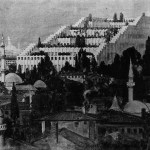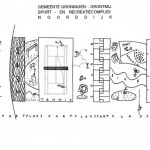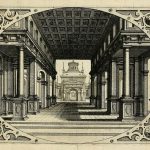In 1920, German architect Hans Poelzig began the preliminary design of the Festival Theatre (Festspielhaus) for Hellbrunn, Salzburg. The visionary project remained sadly on paper because of the absence of an international financial help, and the massive inflation of the 1920s. A beautiful collection of drawings owned by the Architekturmuseum der Technischen Universität in Berlin helps appreciate the majestic proportions of the project, its expressionist interiors and the overall plastic qualities of Poelzig’s proposition.
In 1920, the Salzburg Festival was established by Max Reinhardt, at the time one of the most important theatre directors in Europe and the one who commissioned Poelzig the renovation of The Großes Schauspielhaus (Great Theater) in Berlin, a famous example of expressionism in architecture, opened in 1919.
The theatre in Salzburg was meant to be a complex of buildings, co-ordinated into a monumental whole, able to merge with the topography of the site. The large festival theatre, with 2,000 seats, was accompanied by a smaller Mozart Spielhaus, for “only” 800 people. Workshops, studios, rehearsal halls, terraces, arcades and a restaurant would complete the ensemble. The project was reduced in 1922 to only a house for opera, theater and concert for 3000 spectators.
Poelzig’s project for a Festival Theatre in Salzburg appears exteriorly like a mountain composed of superposed circular arcades, while the interiors play with the idea of a cave, massively decorated in an almost organic fashion. The exterior airy arcades delineates the continuous, monumental façade of the theatre and correspond to the galleries inside.
Click the images to enlarge:
All images: © Architekturmuseum der Technischen Universität in Berlin






[…] yet rationally controlled project was the one submitted by Hans Poelzig (see also on Socks: the Festspielhaus in Salzburg and the Sulphuric Acid Factory in Luboń, Poland), an anti-rethorical exercise in finding a common […]